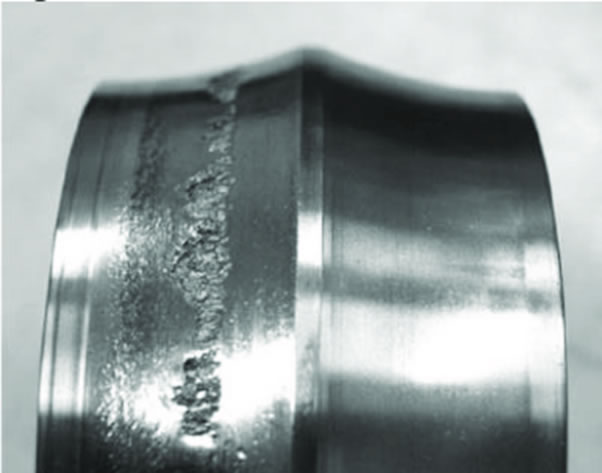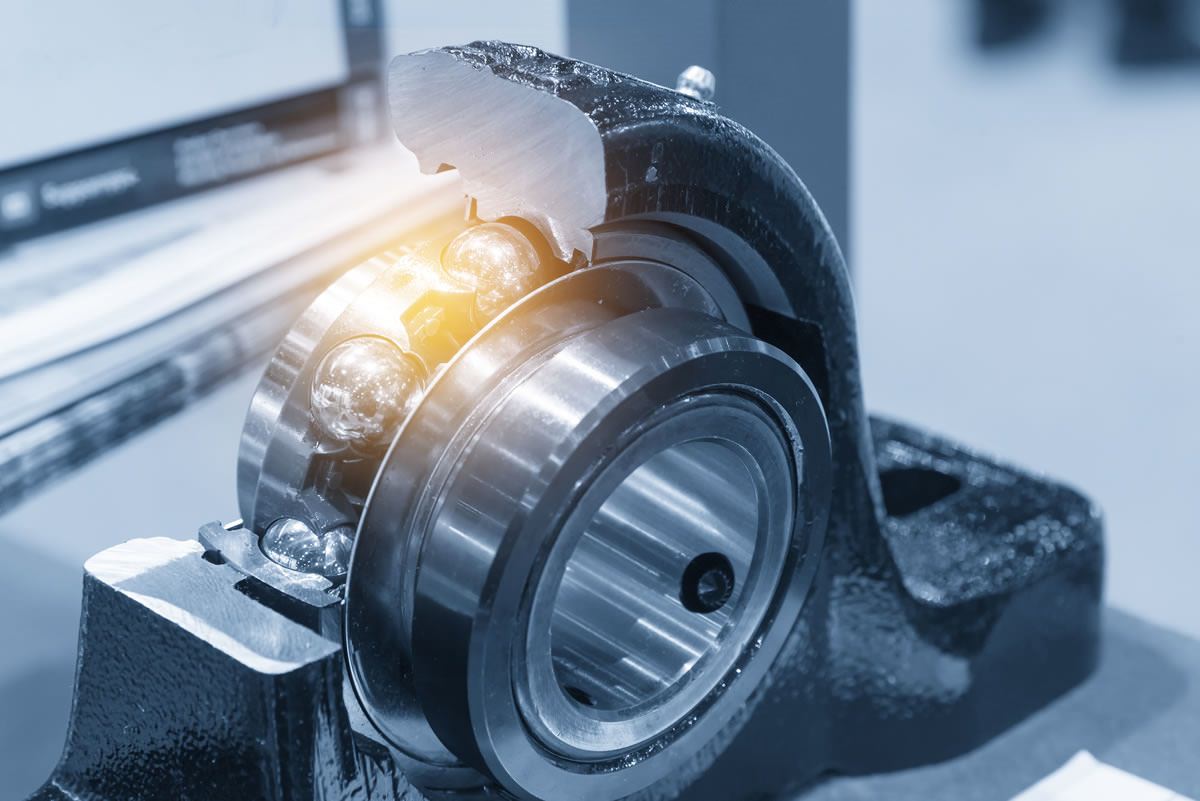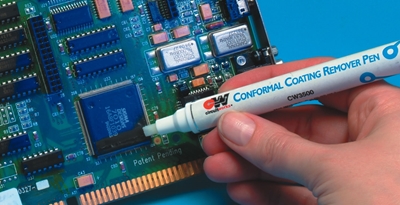In the context of machine operation, rolling-element bearings or roller bearings support revolving machine elements and carry their loads while minimizing friction. Degradation of the roller bearings during machine operation may lead to a fault or even a failure which can seize the machine operation altogether. In an industrial setup with heavy equipment or machinery reliant on roller bearings, any malfunction in roller bearings could result in undesirable reactive maintenance. To avoid this scenario, it is important to identify and predict possible causes of failure enabling planned predictive maintenance instead.
This article aims to elaborate on the underlying reasons for failure in roller bearings. Particularly, electrical and lubrication effects are discussed in detail along with some mechanical processes leading to a fault-free machine operation. Finally, CircuitWorks Silver Conductive Grease from Chemtronics is highlighted to overcome the causes of failure.
What are Roller Bearings?
Roller bearings shown in Figure 1 are the most abundant mechanical components used in industry. They find their applications in railway wagons, electric motors, gearboxes, CNC machines, and conveyor belts. Roller bearings are composed of two races (rings) separated by a group of balls/rollers.

Figure 1: Roller bearing
Electrical Pitting of Roller Bearings
The proper lubrication of the rolling balls within the roller bears is indispensable to reduce wear and prevent corrosion. Conventional greases contain oil that serves this lubricating purpose. With increased rotation speed, this lubricant grease separates raceways from the ball bearings. With added pressure, the grease squeezes out of the way and only a thin film of the lubricating insulating oil remains between the balls and raceways in the bearings.
In some applications (e.g., railway vehicles, traction motors, and compressors), exposure of lubricated metal contact (e.g., the contact between roller balls and rings in Figure 2) to an electric field causes a current to flow through this lubricated metal contact. A voltage difference creates an electric field, which causes a flow of current. A very common example is when the arc welding electrode (positive terminal) comes in contact with the working metal (negative terminal/electric ground). The electric circuit is completed and a large current flows through the working metal to the ground. If this working metal has roller bearings attached to it, the current will try to flow through the bearings as well.
Due to this current flow, the grease between roller balls and bearing rings (shown in Figure 2) will deteriorate. In electric motors and alternators, voltage levels are higher and hence stronger electric fields exist. This can cause sparking which melts the metal surfaces. This leads to electrical pitting, the deterioration of the metal surface caused by the electric discharge through the thin insulating oil film in roller bearings. The passage of electric current generates metal particles, which deteriorate the lubricant and metal surface. This deteriorated lubricant roughens the roller surfaces and generates ridge marks. When these rough surfaces come in contact with each other, they generate vibrations that disturb the stable operation of the machine. Moreover, unwanted ambient noise is also generated. Electrical pitting is a major factor that leads to premature replacement of roller bearings.
When current starts to flow through a lubricating contact, the conventional grease acts as a non-conductive material because of its high volume resistivity (Ω.cm). If the impedance of this contact is very high, static electricity in the form of a voltage equal to the breakdown voltage of the insulator builds up leading to an electrical breakdown and arcing. This is a well-known issue in trains in which the rail serves as a ground connection and the residual current has to pass through bearings [2]. Electrical pitting is not noticeable when the electrical current density is less than 1 A/mm2.
Experimental Study of the Advantages of Conductive Grease
One experiment studied the performance of lubricated roller bearings in the presence of current flow [3] (Figure 2). A DC of 6A flows from the outer to the inner ring. The test was performed using seven greases including both conductive and non-conductive materials. Very small spherical carbon-black (CB) particles were used as conductors. Material properties are summarized in Figure 3.

Figure 2: Experimental setup for roller bearing test [3]
Using non-conductive grease A, ridge marks appeared on the inner ring rolling surface after 88 hours of operation. With the conductive grease B, no ridge marks appeared even after 100 hours of operation. Moreover, unlike a constant voltage profile obtained with conductive grease B, an increase in voltage was observed with the non-conductive grease A [3]. A significant increase in vibrations was also observed with the non-conductive grease A. The results are shown in Figure 4.
|
Grease |
Base oil |
Thickener |
Conductive material |
Penetration |
Volume resistivity (Ω * cm) |
Base oil viscosity at 40°C (mm2/x) |
|
A |
Mineral oil |
Lithium complex |
Non |
310 |
>1.0 x 107 |
101 |
|
B |
Poly α olefin |
CB |
CB |
259 |
6.7 x 101 |
30.5 |
|
C |
Ester |
CB |
CB |
220 |
4.1 x 101 |
33.2 |
|
D |
Fluorine oil |
CB |
CB |
224 |
5.5 x 102 |
400 |
|
E |
Poly α olefin |
CB |
CB |
430 |
1.7 x 103 |
30.5 |
|
F |
Ester |
CB |
CB |
430 |
1.7 x 102 |
33.2 |
|
G |
Mineral oil |
Lithium complex |
CNT |
211 |
5.6 x 104 |
101 |
Figure 3: Properties of greases used [3]

Figure 4: Performance comparison on conductive and non-conductive greases [3]
The deteriorated performance of bearings in the case of non-conductive grease (Grease A) is attributed to the current density. The current density is high for Grease A mainly because an electrical channel for current is formed only at the rolling contact area. In contrast, with conductive grease (Grease B) there is more than one electrical channel for the flow of current.
Conductive grease provides an easier path for current flow. Consequently, current density (A/mm2) is lower in this case and hence very low chances of electrical pitting exist. This condition is depicted in Figure 6. Another key difference is in the volume resistivity (Ω.cm) of the two greases as shown in Figure 3. Another consideration is with non-conductive grease, sparking at the roller contact area is likely to happen if static electricity is not discharged.
Conductive vs. Dielectric Greases
Generally, conductivity is not intended in lubricated parts. That is why the use of conductive greases has not been widely reported in the industry and they are considered to be application-specific only. As compared to dielectric greases, conductive greases are much more expensive. While both types of greases provide good lubrication, dielectric greases are non-conductive and prevent current flow. Conductive greases are also used in uneven or rough electrical places to cover microscopic imperfections and make a continuous path between electrical contacts.

Figure 5: Electrical pitting in bearing [4]
The fine metal particles fill the voids in connecting metals. Conductive greases can help save costs by providing a cheap solution of providing a ground or conductive path, rather than spending a lot on expensive hardware solutions to address the same problem. Unlike dielectric greases, conductive greases are thermally conductive. However in balance with the extra features provided by conductive greases, extra care has to be taken while applying it as they can create unintended electrical short circuits.

Figure 6: Electrical channel formation in roller bearings [3]
CircuitWorks Conductive Grease for Greater Electrical & Thermal Conductivity
Being the most conductive metal on earth, Silver (Ag) is the best choice for the manufacturing of conductive grease. The conductivity value of Silver is 6.30 x 107 S/m which is greater than copper, gold, and all other metals. Silver is an expensive metal and preferred in applications where high conductivity over a small distance is desired. As compared to conventional Carbon conductive greases, Silver conductive greases offer greater electrical and thermal conductivity.
Chemtronics has been delivering high-performance and high-quality products to its customers since 1958. CircuitWorks Silver Conductive Grease, with proven lubrication properties, protection from moisture, oxidation, and other environmental factors, also provides maximum electrical and thermal conductivity. The advanced silicone lubricant is compatible with metals, rubbers, and plastics. With pure silver powder as the conductor used, CircuitWorks Silver Conductive Grease controls static discharge, prevents voltage build-up, and is suitable for use in ground circuits. It is also an excellent choice for mechanical wear protection in rotatory switches, potentiometers, slide connectors, and slip rings.
For more information, contact your Chemtronics application specialist at 678-928-6534 or [email protected].
References
|
[1] |
B. &. E. Services. [Online]. Available: https://www.brgandeng.co.uk/1_10_ball-roller-bearings.html. [Accessed 19 January 2022]. |
|
[2] |
S. N. L. Erland Eriksson, "Electrical resistivity and conductivity of greases: An initial study," Lubrication Science, vol. 15, no. 1, pp. 33-49, 2002. |
|
[3] |
J. SUZUMURA, "Prevention of Electrical Pitting on Rolling Bearings by Electrically Conductive Grease," Quarterly Report of RTRI, vol. 57, no. 1, pp. 42-47, 2016. |
|
[4] |
L. N. P. V. Miroslav Vaculka, "Case study of multiaxial criteria for rolling contact fatigue of bearing steels," MATEC Web of Conferences, vol. 165, p. 7, 2018. |




